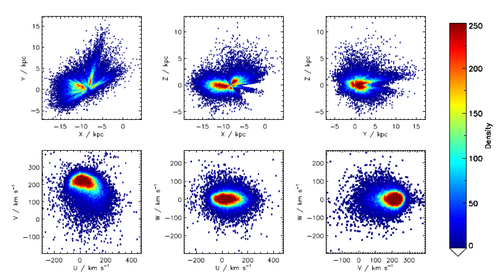LAMOST publishes the biggest spectroscopy catalogs of M type stars
Recently, a research team from Shanghai Astronomical Observatory of CAS, China West Normal University, LSST, and University of Chile, with Dr. Jing ZHONG as the first author, presents new catalogs of M giant and M dwarf stars from the LAMOST DR5. In total, 39,796 M giants and 501.152 M dwarfs are identified from the classification pipeline. It provides important data support for further study of the Milky Way and star formation and evolution using M-type stars. This work has published in the Astrophysical Journal Supplement Series.
M-type stars are one of low-temperature stars with a surface temperature less than 4000K. They are divided M-giant and M-dwarf stars according to their luminosity and surface gravity. Each has different physical properties and research value.
M dwarfs, also known as red dwarfs, are small-mass main-sequence stars. There are about 70% of the stars in the Milky Way are M dwarfs. Due to its small size and low luminosity, it can only be observed in the range of 1~2 Kpc in the solar neighborhood, which is very suitable as a tracer for studying the chemical/dynamic characteristics of the solar neighborhood. In addition, this type of star is also a popular observation target for humans to search for exoplanets and to find livable celestial bodies.
The M giant stars, are very bright. They are almost at the last stage in stellar evolution. They have exhausted most of the hydrogen inside the star. The M giant star consists of a huge hydrogen envelope with a radius up to 1AU (about 215 solar radii). The large radio makes them with high luminosity and are easily detected even at pretty far away distances. So M giant stars are a powerful tool for tracing the metal-rich structures in the Galactic halo.

Figure: Galactocentric spatial distribution and space velocity distribution of confirmed M giants in LAMOST DR5. The spatial distribution clearly shows that the Galactocentric distances for most of M giants are less than 18 kpc.